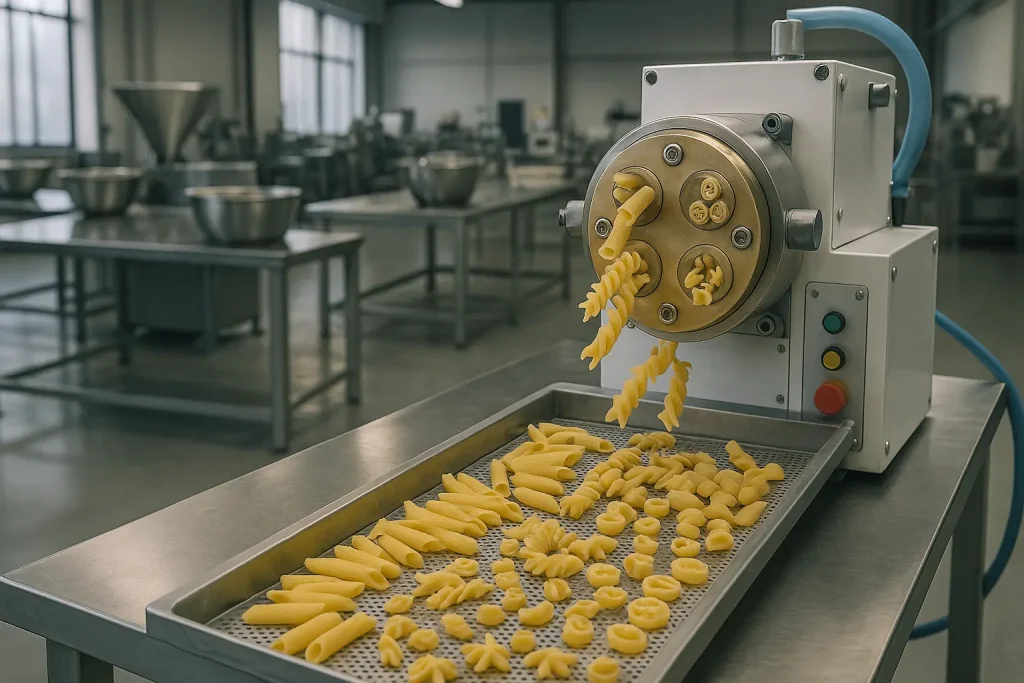
From the rustic kitchens of Italy to modern food manufacturing plants across the globe, pasta remains a beloved staple. But have you ever wondered how those distinct pasta shapes—such as penne, fusilli, macaroni, and farfalle—are made consistently and at scale? The answer lies in precision pasta die cutters—tools that combine food-grade engineering with centuries-old culinary traditions.
Today, food manufacturers rely on custom die cutters to produce pasta in a wide variety of shapes and textures while ensuring quality, hygiene, and consistency. Let’s explore how rotary dies are revolutionizing pasta production and the various types of pasta that owe their distinctive shapes to this technology.
How Pasta Die Cutters Work
In pasta manufacturing, dough is pushed through specially designed extrusion dies made from food-grade materials, typically bronze, Teflon, or stainless steel. These dies determine the final shape and surface texture of the pasta. While smaller setups may use manual equipment, industrial producers use custom rotary die systems for high-volume, automated production.
Companies like Sakazaki manufacture custom food product dies that meet FDA standards, offer non-stick performance, and withstand high-pressure extrusion without deforming.
Why Custom Dies Matter in Pasta Manufacturing
- Shape consistency across large batches
- Custom branding and novelty shapes
- Compatibility with different dough types
- Non-stick, hygienic, and easy-to-clean surfaces
- High-speed operation with reduced wear and tear
Sakazaki offers custom-designed rotary dies for food processing that enable pasta producers to maintain strict standards while maximizing creativity and output.
Popular Pasta Shapes Made with Die Cutters
1. Penne
A classic tube-shaped pasta with diagonal ends. Made using cylindrical dies with sharp diagonal blade inserts for cutting.
2. Fusilli
Known for its distinctive spiral shape, fusilli is created by rotating the dough as it is pushed through a grooved die.
3. Macaroni
A U-shaped or elbow-style pasta made using curved dies that control thickness and bend.
4. Rigatoni
Large, rigid tubes that require textured dies to produce grooves that help sauces cling better.
5. Farfalle (Bow-Tie Pasta)
Cut from flat sheets and pinched at the centre, these require complex rotary die cutters and embossing elements.
6. Spaghetti & Vermicelli
Long, thin strands produced using multi-hole round dies, ideal for rapid extrusion and uniform sizing.
7. Custom Kids Pasta
Novelty shapes like animals, letters, or cartoon characters are possible using bespoke CNC-milled rotary dies—a speciality offered by Sakazaki.
Sakazaki’s Role in Modern Pasta Die Manufacturing
Sakazaki brings engineering precision to culinary craftsmanship. Their food-grade rotary dies are:
- Manufactured with FDA-approved, non-toxic materials
- Compatible with high-pressure extrusion lines
- Designed for easy cleaning and corrosion resistance
- Customizable for unique brand shapes or textures
- Supported by retooling, sharpening, and refurbishment services
Whether you’re producing classic Italian pasta or launching a new pasta snack brand, Sakazaki’s die solutions can enhance product quality, brand identity, and manufacturing efficiency.
Conclusion: The Perfect Pasta Starts with the Right Die
While pasta may have humble origins, modern production requires cutting-edge equipment to meet today’s market demands. With custom rotary dies, manufacturers can experiment with shapes, control quality, and scale up production without sacrificing authenticity. And with Sakazaki’s expertise in food-grade die manufacturing, the future of pasta innovation looks more delicious than ever.Looking to upgrade your pasta production line? Contact Sakazaki today for custom food-grade die solutions built for precision and performance.